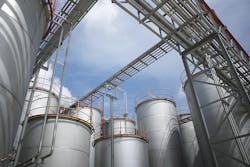EPA regulations aim to improve chemical process safety
Chemical plants would be required to consider the use of potentially safer technologies under new safety standards proposed by the U.S. Environmental Protection Agency (EPA).
The revised Risk Management Program (RMP) regulations are intended to improve chemical process safety, assist local emergency authorities in planning for and responding to accidents, and increase public awareness of chemical hazards at regulated facilities.
“Chemicals are a necessary part of our everyday lives. However, as we have too often seen they can cause loss of life, injury and significant property damage,” said Mathy Stanislaus, assistant administrator for the EPA’s Office of Land and Emergency Management. “It is these dangers that we are working to prevent and minimize as we propose revisions to the RMP, such as improving our prevention program requirements, ensuring coordination with first responders, and ensuring that accident planning protects local communities that need to evacuate or shelter-in-place during an accident.”
The proposals would not force facilities to actually adopt “inherently safer technologies” but simply to evaluate the feasibility of implementing less-hazardous approaches.
“The decision to implement such measures must consider the numerous factors related to processes, facilities and society at large. Improper implementation of a seemingly safer alternative may lead to undesired consequences,” the agency said in a statement quoted by local newspaper the Charleston Gazette-Mail.
“While EPA believes that sources should look for additional opportunities to increase safety, we believe that the facility owners or operators are in the best position to identify which changes are feasible to implement for their particular process.
“This decision should be based on a careful analysis and take into account: the chemicals present and their associated hazards; the operations and process conditions involved; consequences to workers, nearby populations and the environment; and the types of equipment used that are specific to the facility’s process.”
